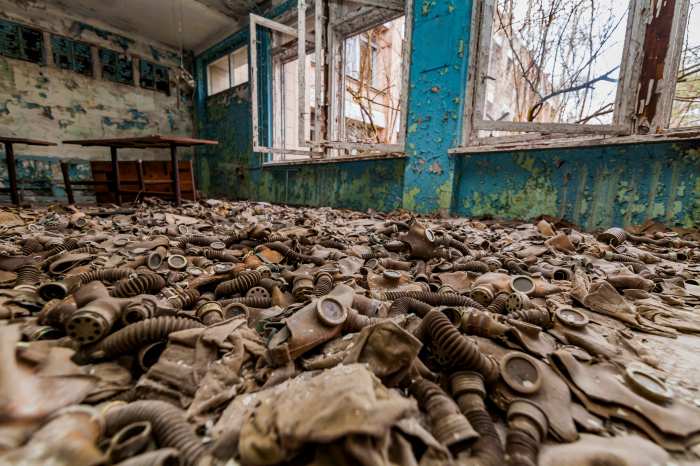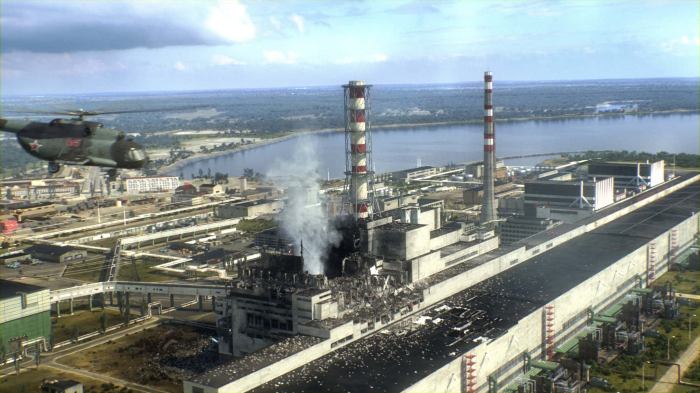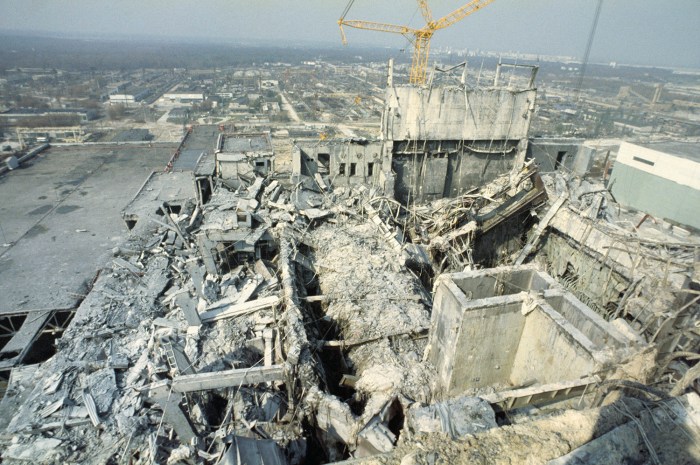The Chernobyl nuclear disaster, an event that shook the world, was a catastrophic accident that unfolded at the Chernobyl Nuclear Power Plant in Ukraine on April 26, 1986. This disaster had profound consequences not only for the immediate vicinity but also for the entire world, leaving a lasting legacy of environmental, health, and political implications.
The disaster was the result of a combination of design flaws and human errors, leading to an explosion and fire that released large amounts of radioactive material into the atmosphere. The immediate impact was devastating, with widespread contamination of the surrounding areas and significant health effects on the exposed population.
Historical Context

The Chernobyl Nuclear Power Plant, located in Ukraine, was a significant part of the Soviet Union’s energy program. It was one of the largest nuclear power plants in the world, providing a substantial amount of electricity to the Soviet Union and its allies.
The construction of the Chernobyl Nuclear Power Plant began in 1970, and the first reactor became operational in 1977. The plant consisted of four RBMK-1000 reactors, each of which was capable of producing 1,000 megawatts of electricity. The RBMK-1000 reactor design was developed by the Soviet Union and was unique in that it used graphite as a moderator and water as a coolant.
This design was considered to be less safe than other reactor designs, and it was later determined that it was this design that contributed to the Chernobyl disaster.
Political and Economic Factors
The political and economic factors that contributed to the Chernobyl disaster were complex and multifaceted. The Soviet Union was under pressure to increase its energy production, and the government was eager to demonstrate the safety and efficiency of its nuclear power program.
This pressure led to the construction of the Chernobyl Nuclear Power Plant without adequate safety measures.
The Soviet Union also had a centralized economic system, which made it difficult to allocate resources to safety measures. The government was more concerned with meeting production targets than with ensuring the safety of the nuclear power plant.
The Accident

The Chernobyl nuclear disaster occurred on April 26, 1986, at the Chernobyl Nuclear Power Plant in Ukraine. It was the result of a catastrophic sequence of events that led to the explosion of a reactor core and the release of large amounts of radioactive material into the environment.
Sequence of Events
The accident began during a safety test that was being conducted on Reactor 4. The test involved reducing the reactor’s power output and then increasing it again to see how the reactor would respond. However, during the test, a combination of design flaws and human errors led to a sudden surge in power.
The surge in power caused the reactor’s fuel rods to overheat and rupture, releasing large amounts of radioactive material into the reactor core. This led to a series of explosions that destroyed the reactor core and sent radioactive material into the atmosphere.
Design Flaws and Human Errors
Several design flaws and human errors contributed to the Chernobyl disaster. These included:
- The reactor’s design was unstable at low power levels, making it prone to power surges.
- The operators of the reactor were not properly trained to handle the safety test.
- The reactor was not equipped with a containment structure to prevent the release of radioactive material in the event of an accident.
These design flaws and human errors combined to create a perfect storm that led to the Chernobyl disaster.
Immediate Consequences
The Chernobyl disaster had a devastating immediate impact on the plant, surrounding areas, and nearby populations. The explosion and subsequent fire released large amounts of radioactive material into the atmosphere, contaminating a vast area.
Health Effects, Chernobyl nuclear disaster
Those exposed to radiation experienced a range of health effects, both acute and long-term. Acute effects included radiation sickness, which can cause symptoms such as nausea, vomiting, diarrhea, and skin burns. Long-term effects included an increased risk of cancer, particularly thyroid cancer, and other health problems such as cardiovascular disease and infertility.
International Response

In the aftermath of the Chernobyl disaster, the international community swiftly mobilized to contain the crisis and provide assistance to the affected areas. The disaster had far-reaching consequences beyond the borders of the Soviet Union, and international cooperation was essential in mitigating its impact.
One of the key organizations involved in the international response was the International Atomic Energy Agency (IAEA). The IAEA played a crucial role in coordinating the exchange of information and expertise among affected countries and international organizations. It also provided technical assistance to the Soviet Union in containing the disaster and assessing its environmental and health impacts.
Role of the IAEA
- Coordinated the exchange of information and expertise among affected countries and international organizations.
- Provided technical assistance to the Soviet Union in containing the disaster and assessing its environmental and health impacts.
- Established an international fund to support the victims of the disaster and the reconstruction efforts.
Last Point
The Chernobyl nuclear disaster serves as a stark reminder of the potential risks associated with nuclear power and the importance of safety and regulatory measures. It has led to significant changes in nuclear power plant design and operation worldwide, as well as increased international cooperation in nuclear safety.
While the long-term effects of the disaster continue to be studied and addressed, the Chernobyl nuclear disaster remains a pivotal event in the history of nuclear power and a reminder of the need for constant vigilance and innovation in this field.
Top FAQs: Chernobyl Nuclear Disaster
What caused the Chernobyl nuclear disaster?
The disaster was caused by a combination of design flaws in the reactor and human errors during a safety test.
What were the immediate consequences of the disaster?
The immediate consequences included the release of large amounts of radioactive material into the atmosphere, widespread contamination of the surrounding areas, and significant health effects on the exposed population.
What are the long-term impacts of the disaster?
The long-term impacts include environmental contamination, social and economic disruption in the affected communities, and ongoing health effects for those exposed to radiation.
What lessons were learned from the Chernobyl disaster?
The disaster led to significant changes in nuclear power plant design and operation worldwide, as well as increased international cooperation in nuclear safety.